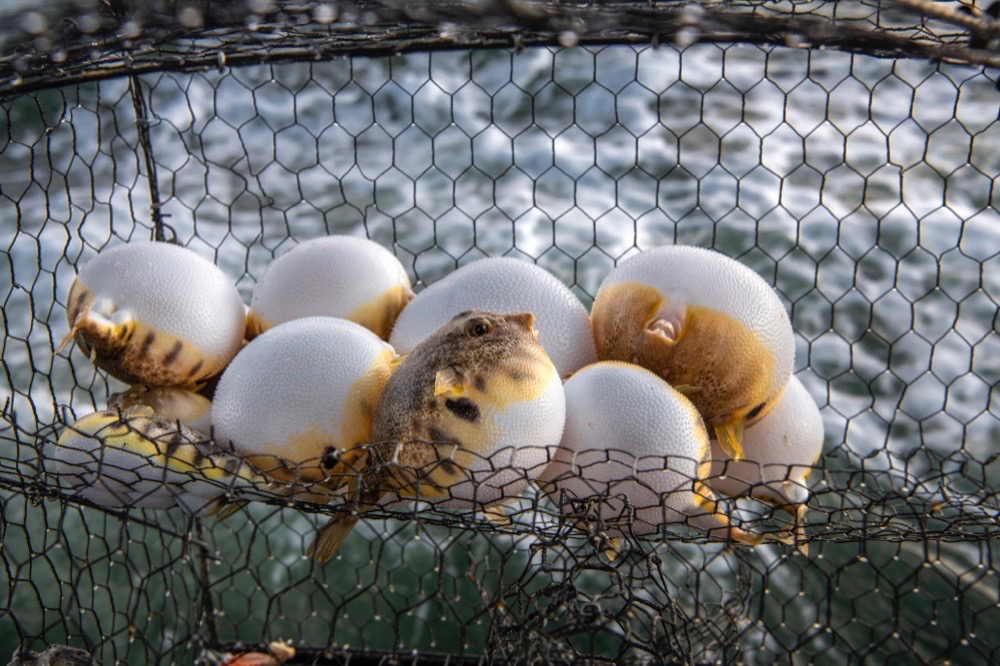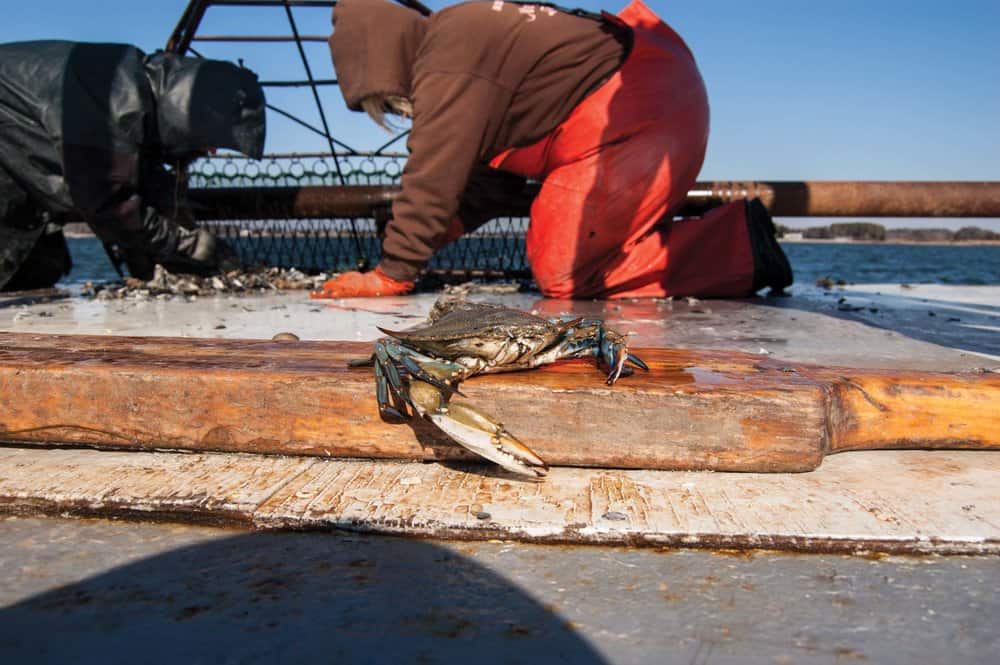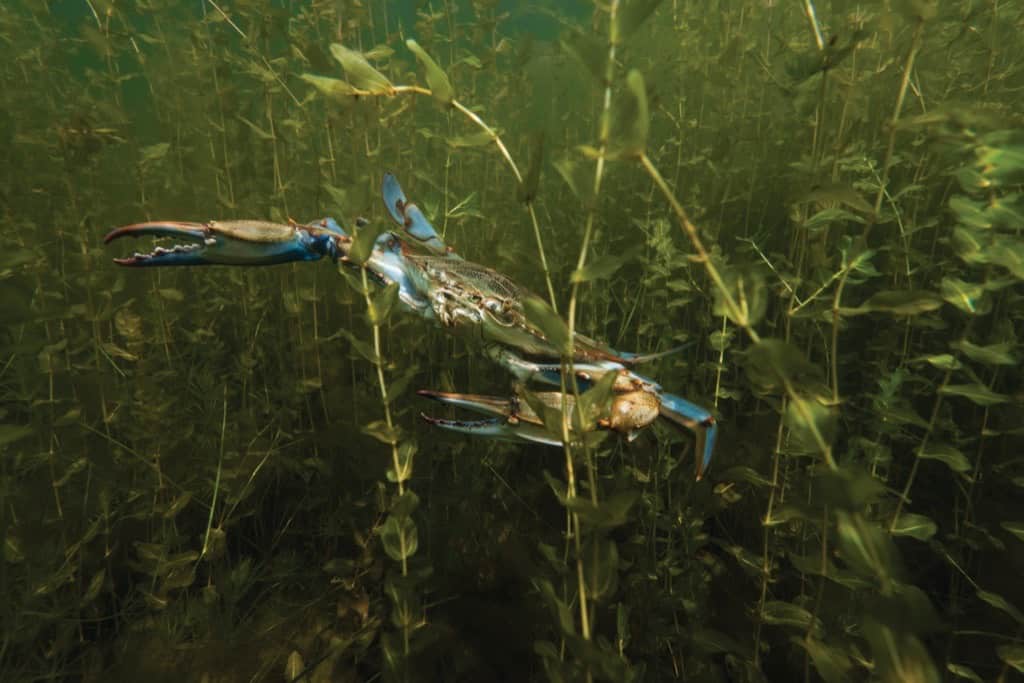Oyster Growing at Home
There’s no shortage of ways to support oyster restoration efforts in the Chesapeake Bay. You can donate to nonprofits that plant oysters throughout the watershed, such as Oyster Recovery Partnership or Chesapeake Bay Foundation. You can choose restaurants and seafood businesses that source their oysters locally and donate their spent shells to oyster recycling programs, such as the Shell Recycling Alliance in Maryland or the Virginia Oyster Shell Recycling Program. And recognizing that every single oyster benefits the Bay by filtering 50 gallons of water a day, you might wonder: Can you grow your own oysters right at home? Yes. And it might just be the pandemic project you’re looking for.
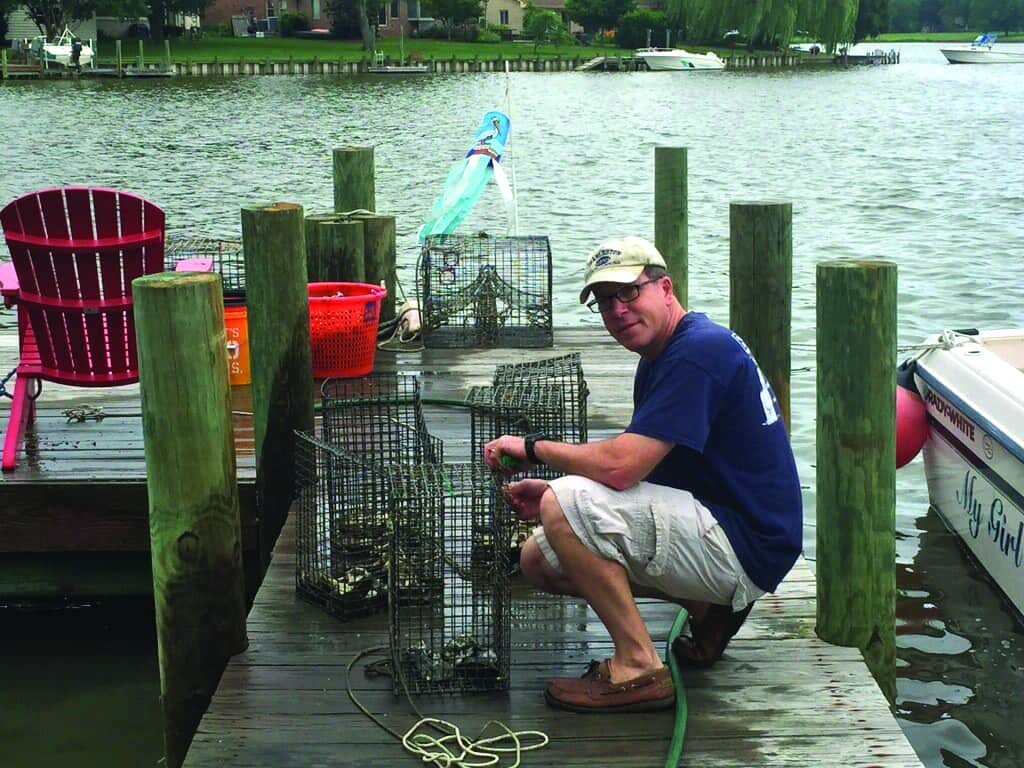
Maryland
If you live on the water (or in a neighborhood with a community dock) and want to grow oysters, there’s a lot of support to help you get started. The Maryland Department of Natural Resources’ Marylanders Grows Oysters (MGO) program aims to do just that, fostering citizens’ awareness and stewardship of their local river systems and the Bay through growing oysters.
The program goes back to the Tred Avon River in 2008. That year, MGO provided the owners of 177 private piers with 6,125 oyster cages (produced by state inmates), spat, and the know-how necessary to grow young oysters. They were planted roughly nine months later in local sanctuaries closed to harvesting. Since then, the numbers have grown to over 1,500 private piers and roughly 7,800 cages across 30 different rivers, creeks, and coves, resulting in roughly two million citizen-grown oysters being planted in sanctuaries each year. DNR now works in partnership with the Oyster Recovery Partnership (ORP) and the University of Maryland Center for Environmental Science.
“The program has been tremendously popular over the years,” says MGO Director Christopher Judy. “Participants become part of a larger community of people helping their local area and the Bay by growing oysters. And as long as an area has a suitable number of people who want to join and a local coordinator, and can support oyster growth and survival, we’re always open to new groups coming in.”
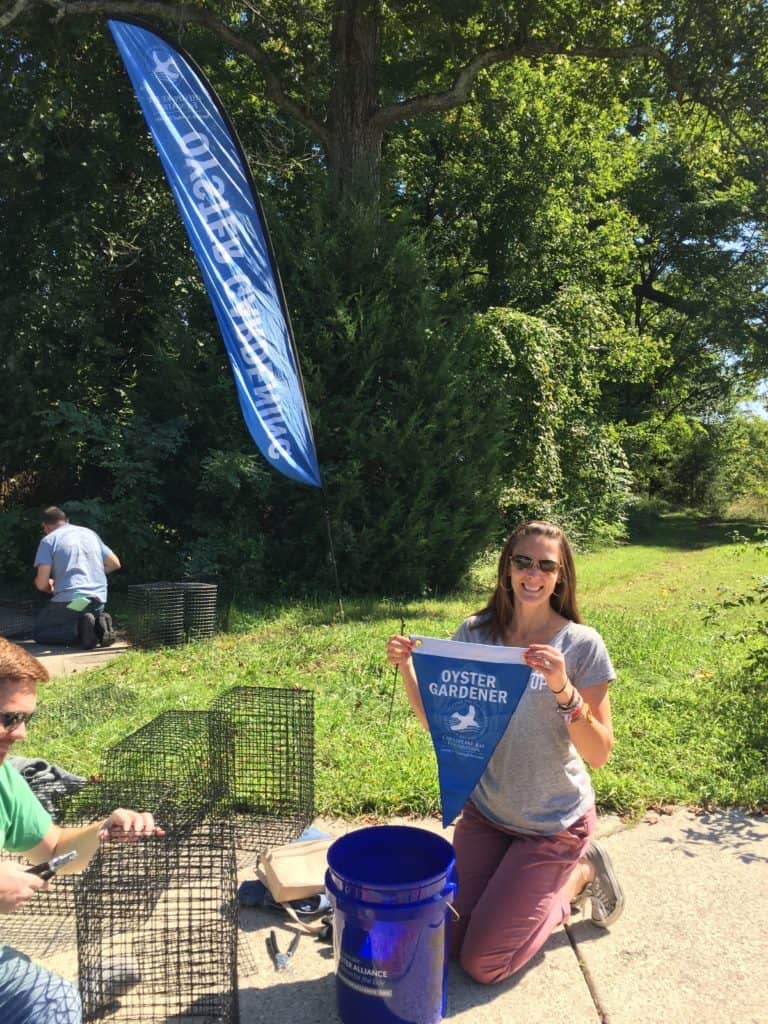
MGO is modeled after the Chesapeake Bay Foundation’s oyster gardening program, which helps waterfront homeowners within established boundaries set up their own oyster foster home. Prospective oyster growers attend a three-hour workshop where they build their own oyster cages and receive the instruction and 1,000 to 2,000 spat they’ll need to grow them. Then they can install the spat-filled cages on a dock, pier, bulkhead, or pilings in September; tend them, with periodic cleaning and shaking to dislodge sediment and waste, for nine months; and return the bivalves for planting on nearby sanctuary reefs in May or June.
And yes, ambitious Marylanders can strike out on their own, growing oysters independent of the two programs—as long as it’s for non-commercial purposes, in an approved area, and the grower registers with the state. A new oyster-gardening kit from Hoopers Island Oyster Co., available to order now for March 2021 pickup, includes seeds and equipment “ready to toss in the water with no fuss.”
The goal of all the programs is to engage and retain citizens who’ll not only keep providing healthy oysters for sanctuaries each spring and keep coming back for more spat to raise each September, but also to recruit additional growers—oyster-growing evangelism.
Virginia
While its highway signs say it is for lovers, Virginia is for oyster growers, too.
CBF urges Virginians to become oyster gardeners, promising they will be “the easiest pet you’ll ever own.” The foundation offers seminars and “roundups,” or spat pick-ups, in Hampton Roads, Virginia Beach, and Norfolk.
And while the state lacks a legislated program like Maryland’s, the Virginia Department of Environmental Quality promotes the practice by providing citizens with the Virginia Oyster Gardening Guide: an exhaustive, soup-to-nuts resource that covers site evaluation (based on salinity, water depth, dissolved oxygen levels, plankton availability, and Virginia Department of Health field data), growing strategy (spring vs. fall), containment system options (Taylor floats, mesh bags, or cages), permitting, supplies (including area-appropriate, disease-resistant spat), set-up and maintenance, and harvesting (for consumption, donating to sanctuary reefs, or even building their own reef).
To put it simply, the goal of the oyster gardening guide is to help Virginians “get hooked on oyster gardening.”
Finally, those who wish to become hooked, or help others do the same, can also turn to the Tidewater Oyster Gardeners Association. The 23-year-old nonprofit and its 600-plus members, including over 100 expert-taught “Master Oyster Gardeners,” promotes oyster cultivation from the James to the Patuxent. They help new gardeners with questions, research how various oyster strains are affected by environmental factors, and most popular of all, host oyster tastings and roasts.
As longtime Tidewater member and supporter Doug Clark notes, “Oyster roasts and dinners are a great way to create stewardship and spread the word; plus, eating the oysters that you grow is a delicious reward for each year’s work.”
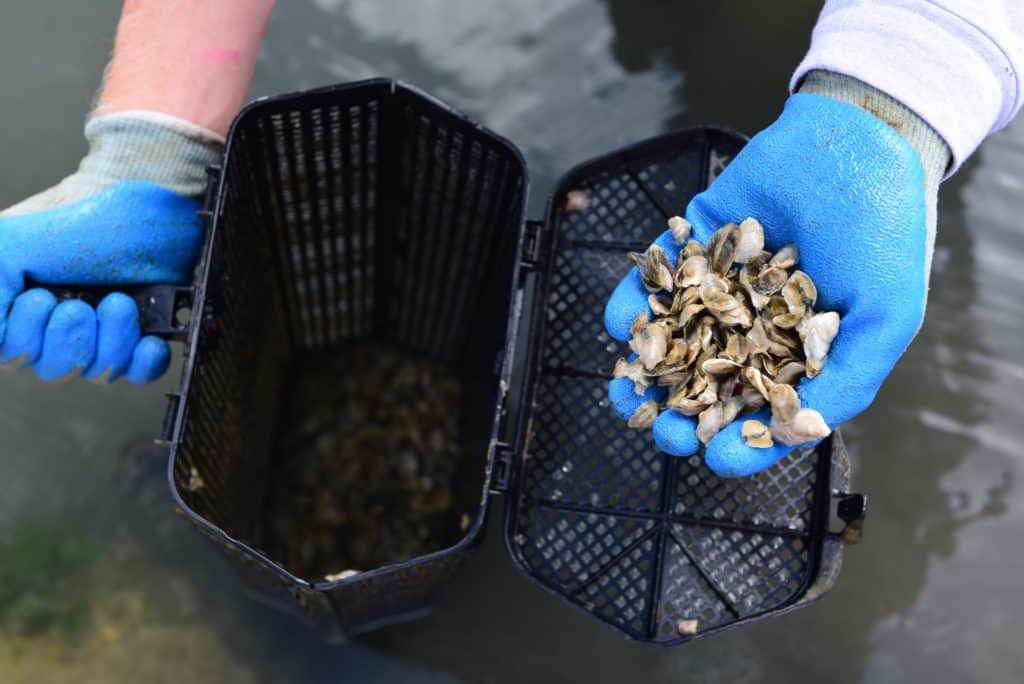
Can you reap what you sow?
It’s undisputable that growing oysters in the Bay combats pollution, thanks to their filter power. But should growers be allowed to harvest and eat their oysters, or should all of these homegrown oysters stay in the water to keep the clean water benefits going? The programs in Maryland and Virginia don’t quite agree on the answer.
Under CBF’s growing program, the oysters are “for restoration purposes only.” And MGO’s Judy points out how consumption impacts restoration. “From an oyster restoration standpoint, the big difference comes at the end,” says Judy. “For while the oysters would be filtering water and providing a small bit of habitat for local organisms before reaching the legal size for consumption (three inches), once eaten, their ecological functions would cease. Oysters planted on a sanctuary reef, however, provide filtering, spawning, and habitat for other species, as well as shell for future oysters to set on. So restoration-wise, a planted oyster provides much greater value for the ecosystem.”
CBF also recommends against eating oysters from private piers, regardless of specific location, for health reasons. And while MGO notes that it’s not actually illegal to consume shellfish that are grown at private piers, it warns of the health risk of consuming those grown in waters that have not been tested and approved.
In Virginia, however, officials believe that folks who harvest and eat what they grow will be more committed to water restoration because they want their waterways to be clean enough to produce oysters that are safe to eat.
State marine resources leaders also doubt the small number of oysters grown off a private dock are making a huge impact, anyway. “The number of individual oysters grown by oyster gardeners does not likely provide a measurable ecological benefit in most areas,” says Andrew Button, head of conservation and replenishment at VMRC.
Whether you grow oysters to serve on the half-shell, to boost the population, or simply as low-maintenance pets, the Bay is a little better for it.

